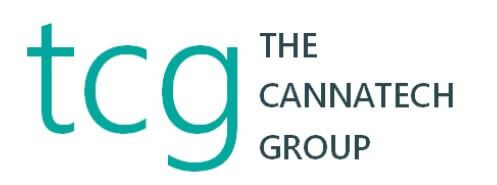All businesses no matter the industry, strive to build a better business through looking towards the future, as well as monitoring current data and establishing a baseline for business. Knowing what to watch for , and how to take action with the data can be the hardest part for some businesses. Key performance indicators (KPI’s) are the backbone of data which help to measure success and provide the insights needed to make strategic decisions. Cannabis companies (actually any company) should implement KPI’s to ensure they are making strategic business decisions to help them grow and cut unnecessary costs. Harry Brelsford of CannaTech Group sits down with Sterling Stoudenmire of Opus Fideles to discuss KPI’s and how to use them to grow your business.
Video Transcription
Harry Brelsford
Hey everybody welcome back to the CannaTech podcast I am with SSterling Stoudenmire, how’re you doing Sterling? Doing? Well? How are you? Good, good. I’m really looking forward to this podcast because KPIs are near and dear to my heart. We’ll get to that in a moment. But first a little bit about you, you have a diverse professional background in finance, how did you get into cannabis?
Sterling Stoudenmire
I began my career at what is now Accenture consulting and did work for, you know, global 1000 companies really kind of all over the world, spent some time in Europe and within South America.
Harry Brelsford
That was a lot of focus on you know, systems in it. But my degree was in finance. And so like always looking at how do we apply finance? Or how do we apply systems to finance to get better at it? And that was a big part of my question. I also spent some time doing human performance work, which is around you know, how do we maximize performance of the workforce, and at the same time, improve, you know, their overall job satisfaction and compensation. And that all comes down to productivity. So that starts leading us towards KPIs.
Sterling Stoudenmire
But I, I started out basically, when I when I left Accenture, I went into a turnaround business. So I did turn around for a while the timeshare industry, a lot of real estate work, and then finished a hotel franchisor turn around and private equity guys was working with asked me to move to Salida, Colorado. And I was like, go where? And they said, kind of in the middle of the state. And I said okay, why they’re like we’re getting in the weed business. I was like, we’re doing what? So you know, I was kind of starting at Square zero. But I grew up going to a farm every summer of my family and working on a farm. So it’s pretty comfortable around the concept of agriculture and horticulture and was sent there basically to build this from the ground up. And that’s what we did over the course of seven years and built a, you know, 100,000 square foot greenhouse cannabis cultivation facility with a large scale extraction facility. We had six different brands and six dispensaries when I departed, plus we distributed to another 150 or so around the state. So we approached it differently than most though. And that was kind of the story of getting to the KPIs because we looked at this as process manufacturing. And so as a result, there were a number of sort of ready off the shelf things we could use, but then we also don’t want to feel on the way.
Harry Brelsford
Yeah, well, what is cannabis Modus? I like the name of that. What is it?
Sterling Stoudenmire
Oh, I never took Latin. But I’m always fascinated with the roots and etymology of words. And so Modus is, you know, has variety of meanings in Latin, but one of them is measurement. And so the whole idea is how do we measure cannabis? And how do we do that in a consistent fashion. And so I created a substack article that or site called cannabis motors. And my goal is to just continuously sort of publish things that we learned and see in the, in the cannabis KPI world, get feedback from people and you know, ultimately, sort of crowdsource pain and more modern term, but really socialize this and get input from other berries and your best practices for the parties and try to establish a baseline ultimately, you know, what should the expectations be? What should you be what should be, you know, financial ratios, retail ratios, etc. But that’s the real problem. Right now, as we progress an industry I think, a little bit beyond having no KPIs to have some, but our two biggest challenge right now are one there’s no consistency and the way they’re calculated. So, you know, when people say, you know, particular KPIs, they might mean something entirely different than what you’re and then the other is, without that consistency, we also have any benchmarks to say, well, this is where your yield should be, or this is where your energy costs should be, or this is, you know, those kinds of things. So you can compare and understand, you know, how much further do you have to go and or how much better can you be than your competitors? Yep.
Harry Brelsford
Well, you probably answered my next question, but but I still want to ask it as you know, you’re the first I’ve seen talk about KPIs in the cannabis segment as I track the segment. I think you’ve already answered it about what what got you here and it sounds like you were just bringing in your traditional background and applying it to cannabis. Is that fair?
Sterling Stoudenmire
Yes. And I think that, that lens of looking at it as you know, product As manufacturing, versus looking at it, as you know, loving the plant or looking at it as Wow, it’s really cool, I can make a living in the cannabis industry, those weren’t my motivations, my motivation was to be as efficient as possible. Because at the end of the day, I’m responsible for the investors capital, and I’m responsible for getting the return on my capital. And in the early days of the industry, I see this changing now, but in the early days of the industry, you know, I characterize the industry as being a lot of smart money chasing a lot of dumb players. And by that, I mean that we had, we had investors who had a lot of capital had a lot of business experience and expertise, and, you know, had a lot of success in investing in companies. But they didn’t have the knowledge of cannabis industry. And again, there were no baselines. There were no benchmarks, because the industry was all underground. Right. So none of that was really published, to the extent that it was It wasn’t consistent. And, you know, it was a lot of, you know, joking around about, yeah, well, this guy went to university, you know, and that’s how he learned this. So, you know, how do we establish those things as an industry? And so I use, you know, manufacturing as sort of a baseline to say, okay, what are what are the sort of common KPIs there, and financial services and financial management, the firm, so all those things kind of came together in that and, you know, I worked my way through college, tutoring, accounting, and finance. So I’d spent a lot of time around these ratios, you know, from an accounting, finance manufacturing standpoint, and doing implementations of ERP platforms and things, you know, that’s an essential component. And that’s why you put these things in, so that you can manage the process and get the results and understand you know, what’s going on. And I was really kind of floored in the early days of the industry that people weren’t even tracking the basic things that you would need to be able to get to a KPI at all right. And so now I think we’re getting to the point where people are tracking those things, but then understanding Okay, well, you know, how do I interpret that? And what do I you know, that that comes down to applying a KPI? And then ultimately, okay, how do I evaluate that KPI? And what actions do I take? And what levers are available for me to improve my efficiency? Yep.
Harry Brelsford
Maybe one or two more examples of the KPIs that you measured? And what I’m getting at is no back in my traditional life of IT infrastructure. I could tell you trouble tickets, right? How many trouble tickets? And how quickly? Did we resolve them? What are two examples, please?
Sterling Stoudenmire
I think the first one is probably the bass yield example. Which is a really interesting one, because, you know, in the, in the underground days, tended to be really kind of meaningless metrics. So the way I looked at it is grams per canopy square foot. And there’s a couple of reasons for that. Most KPIs involve, you know, doing some math and dividing, you know, some set of numbers by some other numbers come from the ratio, right. And what I learned over the years is that, you know, the denominator in that equation isn’t stable. In other words, you know, it can be gamedthe mayor, the ratio is pretty worthless. And so the, in the early days of yield, you know, the two big ones I always heard were pounds per light, and, you know, grams per watt. And so, effectively, kind of trying to measure the same thing. The grams per watt is probably a more accurate measure, because at least takes into account the wattage of the light. But paths for light was sort of the worst one really meaningless, because it all came down to well, what was the cycle time? You know, did you flower for 10 weeks, or 12 weeks or 14 weeks? or eight weeks or whatever? How much square footage in terms of the canopy was that light covering? How many watts did that light have? And you know, all those things were fungible. And so therefore, the metric didn’t really mean much grass for what was a little better. In that, you know, you’re at least they’re saying, This is how many watts of light I had, how many grams I got, but again, it ignores cycle time, right? ignores you know, area, right square area. So the whole idea of grams for canopy square foot is to say, let’s just look at how many grams of product that you get out of a square foot of a canopy, meaning, you know, space on the bench for the plants are, and on a consistent cycle time. So you know, every whatever days, you know, every 56 days, or an eight week cycle, etc. And that way, you at least have a baseline that’s consistent. So to me, that’s sort of like the base KPI for everything. Because if you can improve that, everything gets better.
Harry Brelsford
Well, finally, do you only do KPIs at the grow and production levels? I think I’m hearing that are you dropped down to the retail level?
Sterling Stoudenmire
Yeah, in the retail space. You know, the good news is, the hard part about cultivation is there are some agricultural API’s and things but a lot of it is very specific to cannabis. If you get into retail, you know, retail is retail and it’s all over the world. I’ve worked with retailers in Europe and all over North America. And it comes down to a set of measures that pretty much every retailer has right You know, everything from what the industry likes to call general gross margin return on labor, on labor dollars or on labor hours, or your customer retention rate or average basket size, you know, your inventory turns, those are all standards. But I also look at financial ratios and operating ratios, right. So current ratio, quick ratio, those kinds of things. Because at the end of the day, we’re, you know, we’re a business and we’re responsible for getting a return on invested capital.
Harry Brelsford
Yep. Yep. Well, hey, I want to thank you. And let’s stay in touch with the SEC continue the conversations.
Sterling Stoudenmire
Absolutely. And check out the substack I’ll keep adding things to it and I welcome anybody feedback.
Harry Brelsford
Yep. It What is your URL to go to go see your work?
Sterling Stoudenmire
I believe it’s canvas. Modus. substack calm.
Harry Brelsford
Okay, great. We’ll put it down in the blog below. Thank you, Sterling.
Sterling Stoudenmire
Alright, thanks.








